|
|

|
The Hellenic
Genocide
|
|
The Hellenic (Greek) Genocide
was the systematic torture, massacre and ethnic cleansing of several
million Hellenes (Greeks) perpetrated by the Turks in Asia Minor,
Constantinople (now called Istanbul by the Turks), Eastern Thrace, Imvros,
Tenedos, Macedonia, Cappadocia and Pontos.
Most of the victims
were massacred between 1895 and 1955. The present estimate is that some
2,000,000 Greek children, men and women of all ages were killed during that
period.
The Hellenic Genocide
is commemorated on May 19 and September 14.
|
|
Index
|
|
|
|
The Turkish
Conquest of Europe and Asia-Minor
|
|
The 8th Century
The land of Asia Minor
was an area where for 3000 years Greek civilisation flourished. In the 8th
century, the Oguz Turks, a nomadic hunter-gatherer people moved westward
from their homeland in Mongolia, and settled in what is today West Turkestan.
The Seljuks, a sect of
the Oguz Turks, moved further in the direction of Persia and today's Iraq,
where they served as mercernaries for the caliphs of Baghdad.
From this encounter
with the advanced Persian and Arab civilisations, they enriched their poor
vocabulary, adopted the Arabic script and became muslims retaining
simultaneously their warring nomad characteristics.
The 11th Century
The Seljuk king, Alp
Arslan (1063-1072), unified the various Seljuk factions, invaded Armenia,
and sacked its capital of Ani in 1064. After that he and his armies invaded
Byzantium and following the critical battle at Manzikert (1071) where the
Byzantines were defeated, the Seljuks occupied a large part of the Asia
Minor provinces of Byzantium. Previous to the invasion, there was not a
single Turk living in these provinces.
In this foreign, for
the Turks land there were thus established a number of Seljuk controlled
emirates.
After a short period of
time the Byzantines and the Crusaders dissolved nearly all of these
emirates, except one whose capital was Iconium. This had been named as the
Sultanate of Roum in other words the land of the Romans, as was the
official title of the Greek Byzantine Empire, which was a continuation and
succession of the Eastern Roman Empire.
The 12th to 19th
Century
The raids by Genghis
Khan's (1167-1227) Mongols forced another Turkish tribe, led by
Suleyman-Shah, to abandon Turkistan and to head towards the west. This
group tried to settle in Eastern Asia Minor, but the Armenians and Kurds
ousted them. In an attempt to cross the Euphrates river, their leader was
drowned and buried there, which ever since has been known as
"Turk-mezari", or the "tomb of the Turk" A title which
is indicative of how alien the Turks were in these areas.
The tribe then moved
toward the Sultanate of Roum where it settled often assuming the role of
border-guards. Suleyman's grandson, Osman, (1259-1326), took over the title
of Sultan from the Seljuks and he gave his name to the Turkish people : The
Ottomans.
The leaders of the
Osmanlis quickly realized that since they comprised a minority of
conquerors it would be difficult for them to control the occupied lands,
and simultaneously to pursue further conquests without taking certain
"special measures".
Thus, they decided to
adopt and apply harsh methods previously unknown to the whole world.
Methods which were never repeated again by another nation on earth. The
primary measures taken were as follows :
They declared their
state a warrior or "Gazi" state. In other words, a state that was
bound to declare holy war (Jihad) against the non-believers. This way, they
were able to bring together all kinds of adventurers, who were willing to
fight either for ideological reasons, or for just the spoils of the war.
They adopted the
inhumane measure of forcibly recruiting young Christian children. In other
words, they forcibly took male children of the enslaved Christian families
(mainly Greeks. and later also Armenians Bulgarians, Albanians and Serbs),
and brought them up in special camps They conditioned them to become
fanatic Turks and relentless killers to their own people. These children
would grow up to believe that their father was the Sultan and that if they
were to die in battle they would go to heaven. Thus, because of this New
Army, or Janissaries, (Yeni-ceri in turkish) the Turks continued to pursue
their conquests.
They slaughtered
systematically millions of Asia Minor's inhabitants, in order to change the
ethnic character of the land. It has been estimated that during the seven
centuries of Turkish presence in Asia Minor several millions of Greeks, at
least two-three million Armenians and hundreds of thousands of Kurds,
Syrians, but also Serbs, and Bulgarians in Europe, were systematically
massacred. In the 20th century alone, it has been estimated that
approximately 1,5 million Armenians and more than one million Greeks were
exterminated.
In this manner, the
Turks managed to hold on to Asia Minor, a foreign land for them, where
Greek civilisation had flourished for 2,000 years before the appearance of
the Turks.
The Turks just
destroyed this civilisation and unfortunately did not even try to take
advantage of its accomplishments.
In two previous
occasions the Greek people contributed in civilising their conquerors as
was the case with the Romans and the Franks. One must possess a cultural
identity to be able to absorb what is creative and good from other
civilisations. Unfortunately, the conquering Turks lacked such an identity.
The Turks also failed
to administer their subject peoples within the Ottoman Empire. There were
no "laws" in the civilised sense of the word. The Sultan's word
was the law in the capital and arbitrary rule of local representatives was
the law in the provinces. The property, honour, and life of the conquered
was completely at the mercy of the occasional Turkish official.
The only bond that kept
the multiethnic empire together was the crude use of force-ultimately the
butchery-of the rulers. Slaughter was the rule without concern for innocence
or guilt.
Under these conditions
the Turkish administration was truly detestable to all the subject people
who suffered and patiently waited for each opportunity to throw off the
Ottoman yoke.
The Turks failed to assimilate
the various nationalities within their empire. They could not also
administer them efficiently, not even control the economy because commerce
and industry was left in the hands of the Greeks, Armenians and Jews, while
the Turks kept busy with governing and simultaneously exploiting the
profits while terrorizing the inhabitants.
For the
enslaved people to be finally liberated from their rulers there took place
a series of revolutions, which led to the establishment of independent
states.
|
|
The Greek
War of Independence
|
|
On 25th March 1821 the
Greeks started to fight for their independence from the Ottomans, under the
moto "Freedom or Death".
In 1822 in response to
Chios extending its support to other Greeks the Turks took retribution on
the population. By the end of the massacres – and within a period of just
six months – approximately three quarters of the island's Orthodox
population of 120,000 were killed, enslaved or died of disease. Of the
survivors, almost all fled as refugees.
An estimated 20,000
were direct victims of the massacres. A further 45,000 were taken into
slavery – of whom about half were redeemed and half died, neglected and in
poverty throughout the Ottoman empire.
In
Cyprus then Ottoman governor Kuchuk Mehmed executed 486 Christians who he
accused of supporting the Greek War of independence and 20,000 Greek
Christians were forced to flee the island in order to save their lives.
|
|
The Hellenic
Genocide of Asia-Minor 1908-1922
|
|
In 1908 the Young Turk
revolution forced the Sultan to grant a constitution to the remnants of the
Ottoman Empire.
In spite of the
apparent liberalism of the formally bourgeois revolution which was
spearheaded by the military without the participation of the people, there
continued to develop additional centrifugal tendencies as they did in the
times of the Sultan's despotism. For those nations still within the Empire
whose fellow nationals had established independent states, e. g. the
Greeks- it was natural for them to seek union with their free compatriots.
Those peoples still within the Empire that had not attained separate
statehood, e.g. the Armenians, and the Kurds, focused all their energies
towards the attainment of self-determination and the establishment of
autonomous national homelands.
The Young Turks sought
to rid themselves of troublesome non Turkish ethnic groups so that they
could build a homogeneous Turkish state and so they could avoid further
mutilation of Turkish controlled territory in areas where non-Turks were in
the majority, such as Eastern Thrace,
Western Asia Minor and
Pontos, where the Greeks were in the majority, Eastern Asia Minor where the
Armenians were in the majority and, Southeastern Asia Minor where the Kurds
were in the majority.
Thus, the supposedly
liberal and constitutionally oriented Young Turks returned to the usual
Sultanic abrasiveness and brutality, which now became much more organised
and systematic and assumed genocidal proportions.
The massacres were
premeditated : It was decided that "the Ottomanisation of all Turkish
citizens, which never succeeded through persuasion, had to be done by the
force of arms",
This was stated in the
London Times on the 3rd of October 1911 summarizing the proceedings of the
Council of Union and Progress (The Young Turks).
At first, the
persecutions took place against the Greeks, made under the pretext of the
Balkan Wars (1912-1913). Persecution took the form of lootings, expulsions
and murders. After the wars, persecution continued even more intensively,
to the point where on the 25 of May 1914 the Ecumenical Patriarchate was
forced to declare that the Orthodox Church was "under attack".
The Patriarchate,
further, in a show of protest and mourning, suspended the activities of Greek
churches and Greek schools throughout Turkey.
After the declaration
of World War I, the Turks found the perfect opportunity to organize more
effectively the massacres against ethnic minorities, so that they could
finally transform their empire into a homogeneous nation-state.
Prominent officers of
the Young Turks movement, while serving as members of the government,
organized the expulsion of the inhabitants as well as the lootings and
massacres that were perpetrated against them. Specifically, Talat Pasha,
minister of the interior, was prominent as the master mind of the pogroms.
However, the entire Turkish state administration participated in the
organization and the execution of the extermination programme.
They began with the
genocide of the Armenians, who did not possess a state which would rush to
their aid and followed it up with mass expulsions and massacres of the
Greeks. The victims of this period are over 2.5 million people of which 1.5
million were Armenians. In the Turkish Holocaust
Chronological Index Chronological Index one can see detailed figures
regarding the persecution of the Greeks of Asia Minor, Thrace and Pontos.
After the end of World
War I, the Allies recognized that the property, honor and life of the
Greeks in the Ottoman Empire could not be protected by the Turkish
government.
They assigned to Greece
the responsibility to administer Eastern Thrace and the Smyrna district.
This arrangement was contained in the Treaty of Sevres. Simultaneously, there
was established a separate and independent Pontian state.
The term 'Pontus' comes
from the Greek word for coast, and was applied to the Greek civilization
which had lived on the south-eastern coast of the Black Sea. It had been an
area populated by ethnic Greek since at least the days of Alexander the
Great, once forming a part of the Byzantine Empire, but ever since the
Turkish invasion of Asia Minor they had suffered much under the Turks.
In 1920, Alexander
Millerand, president of the Supreme Allied Council stated : "The
Turkish government not only failed in its duty to protect its non-Turkish
citizens from the looting, violence and murders, but there are many
indications that the Turkish government itself was responsible for
directing and organizing the most cruel attacks against the populations,
which it was supposed to protect. For these reasons, the Allied powers have
decided to liberate from the Turkish yoke all the lands where the majority
of the people were non-Turks".
The Treaty of Sevres was
signed by the Turkish government but Mustafa Kemal refused to recognize it.
After 40 long months of
war, during which Kemal's forces secured considerable foreign assistance,
the Greek military front in Anatolia collapsed.
The Turks reoccupied
Asia Minor and entered Smyrna on September 8, 1922. In Smyrna, in the
meantime, there was an influx of refugees from various parts of Asia Minor.
And the conquering Turks set the city on fire and unleashed the last phase
of the genocide against the Greeks and Armenians.
These were moments of
unbelievable horror. The pier turned red by the blood of tlhe victims. The
bishop of Smyrna Chrysostomos was publicly ridiculed and then slaughtered.
Events were too horrible to even describe. The American Consul in Smyrna,
George Horton, gives a detailed and objective picture of the chilling
Turkish crimes in his book The Blight of Asia (Indianapolis : Bobb and
Merryl, 1925).
The Treaty of Lausanne
ended the Greek-Turkish war and imposed the unjust and mandatory exchange
of 300,000 Turks from Greece for the 1,400,000 Greeks that survived the
holocaust.
The Greek refugees of
Asia Minor, without being consulted had to give up their ancestral homes to
the Turks, after almost 4,000 years of glorious and productive history.
Through the unjust
actions of massacre and persecution of Greeks and Armenians, the
contemporary Turkish state was thus created. It was a state founded on
crime, the state about which French prime minister George Clemanceau said
on the 25th of June, 1919 : "We do not find even one example in
Europe, Asia, or Africa, where the imposition of Turkish sovereignty had
not been followed by a decline in material prosperity, and by the
impoverishment of its culture. Also there does not exist one example where
liberation from Turkish control was not followed by the advancement of
material prosperity and an improvement of the cultural level. Whether
dealing with Christians or Muslims, the Turk has managed to bring
destruction wherever he conquered. The Turk has never been able to develop
in peace that which he won through conquest".
On the 26th of November
1979, the New York Times wrote quite characteristically : "According
to the most recent statistics, the Christian population in Turkey was
diminished from 4,500,000 at the beginning of this century to just about
150,000. Of those, the Greeks are no more than 7,000 Yet, in 1923 they were
as many as 1.2 million". (After the massacres of many hundreds of
thousands).
|
|
The Pogroms in
Constantinople
|
|
Under the terms of the agreement
regarding the exchange of populations in the 1923 Treaty of Lausanne, the
Greek population of Constantinople-a thriving community-and the muslim
community residing in Western Thrace were exempted from the exchange
process.
In the beginning of the
20th century there were 300,000 Greeks residing in Constantinople.
They had managed to
survive there despite centuries of oppression and persecution under the
Ottoman yoke. But the Turks were determined to expel all Greeks from their
ancient home using all available means. Thus, the Turks systematically used
the following measures in order to accomplish their objective :
a) In May 1941, large
numbers of young men ranging in age from 18-38. were conscripted into the
Turkish army from the Greek and Armenian communities The Turkish intention
was to exterminate these young men through the well-known method of
"forced-labour battalions". If this extermination plan was not
successful it was due to protests from the Western allies and the defeat of
the Germans in Stalingrad in December 1942. Seeing the tides of war
shifting, the Turkish authorities permitted the discharge of these
soldiers.
b) On 11 Noverriber
1942, the Turkish government passed a law regarding taxation of property of
non-muslims, known as the VA RLIK VE RGISI. Through this !aw non-muslim
citiizens had to submit, without the right to appeal, to the discretion and
arbitrary judgment of the tax clerks. The tax clerks, in turn, were
instructed to appraise property at amounts many times over the actual value
of each property. Then, if the individual concerned was unable to make
payments of the enormous tax share (quota), the property was seized and the
unfortunate owners were exiled to ACKALE, in Anatolia.
As a result (of the
use) of these harsh and inhuman measures, by 1955 only 25,000 people were
left, rather than the 450,000 that should have been their number given a
normal rate of growth in 35 years.
On the night of the 6th
September 1955, and using the Cyprus situation as a pretext, the Turks dealt
the coup-degrace to the remaining inhabitants. The whole story of this
pogrom is as follows :
On Saturday the 3rd of
September, 1955, the wife of the Turkish Consul in Thessaloniki asked for,
and received, from a photographer in Thessaloniki supposedly for a
keep-sake a series of photographs and films of the Turkish Consulate and
the neighbouring home where Kemal Ataturk was born. The very next day she
and her family left for Turkey.
At ten past midnight on
the 6th of September,1955, in the garden of the Consulate, between the two
buildings, dynamite exploded resulting in broken windows in both buildings.
The Greek authorities rushed immediately to the scene. They established
that two more explosive devices had been positioned in the Consulate yard and
that within the building there was only one Turkish guard. In the
investigation that followed it was determined that the explosives were
placed there by the guard and his accomplice, a Turkish student at the Law
School of the University of Thessaloniki, Oktai Egin Faik, who had brought
the dynamite from Turkey a few days earlier.
On the 6th of
September, Turkish newspapers using forged versions of the photos of the
Turkish consul's wife and even before the explosion took place in Greece,
depicted Kemal's birthplace as totally destroyed. By the evening,
newspapers all over Turkey knew of the alleged destruction of Kemal's home
setting off waves of anger among the Turkish populace.
The Turkish authorities
then transported large groups of people in trains and military vehicles
from Anatolia to Constantinople.
The attack by the angry
mobs began at 5:50 PM on the 6th of September 1955 and ended at 02:00 AM on
the 7th of September 1955. The police calmly assisted and even guided the
mobs, in their relentless path of destruction.
At 00:20 AM on the 7th
of September 1955 martial law was finally declared, at 02:00 AM curfew
began and at 02:30 AM the authorities had restored a semblance of order.
Screaming slogans
"Today your property, tomorrow your lives" the mobs had
perpetrated terrible crimes. Those who guided them knew that by terrorizing
the last Greek residents of Constantinople they would compel them to desert
their homeland, once and for all. Simultaneously by destroying monuments
which were proof of the glorious Greek past of Constantinople, they would
eradicate even future reminders of the Greek presence.
The results of the
vandalisms were :
§
the Theological
School of Halki, the Marasleios School, The Monestary of Valoukli, the
Zappeio School for Girls and many other sites, suffered great damage.
§
of the 83 Greek
Orthodox churches in the <<Polis>> 59 were burned and most
others suffered serious damage to the icons and ancient paintings of great
value.
§
the tombs of Patriarchs
were destroyed, Christian cemeteries and ossuaries were defiled ;
§
3,000 homes were
looted and destroyed ;
§
4348 Greek stores
were looted and destroyed ;
§
200 Greek women
were raped ;
§
hundreds of Greeks
were ill-treated or tortured, such as the old Bishop of Derkon Iakovos; the
metropolitan of Ilioupolis Yennadios, whose beard was cut off and who was
then dragged through the streets so that he would die shortly thereafter
from ill-treatment; and Bishop Pamphilou Yennadios that was thrown into the
burned ruins of Valoukli;
§
15 Greeks were
murdered and among them a 90 year old monk at the Valoukli Monastery,
Chrys. Mantas, who was burned alive. Many others in the monastery were
seriously wounded.
After the pogrom a
great portion of the Greek population left Constantinople to save their
lives.
In 1964 12,000 Greeks
who were protected by the Treaty of Lausanne were deported from the city by
the Turkish government. They took with them three times their number in
relatives and friends. Therefore, in the years 1964 to 1966, about 48,000
Greeks were forced to abandon their ancestral homes.
On the 20th of
September,1975, in a special 35 page Survey section of the influential
English magazine, The Economist, it was written : "Turkish charges
that the Moslem population in Western Thrace is harried by the Greek
authorities are gross exaggerations. In 1923 there were 300,000 Greeks
living in Constantinople and 110,000 Turks living in Thrace. Today, there
are 15,000 Greeks living in Istanbul and 120,000 Turks in Thrace. The
Greeks ask, with some justification, which country has been putting the
pressure on which minority". (Survey-15).
It is
important for us to realize that today, 2005, only 2,000 Greeks still remain
in Constantinople.
|
|
The Islands of
Imvros And Tenedos
|
|
The Greek islands of
Imvros and Tenedos were ceded to Turkey by the Treaty of Lauzanne (1923).
These islands had been liberated from Ottoman control in 1912 by the Greek
Navy. Under Article 14 of the Lausanne treaty, Turkey assumed the legal
responsibility of ruling these islands with a special self-governing
status, which was to be exercised by local authorities. Under these
provisions order would be kept by a police force recruited from the local
Greek population that would also have the responsibility of overseeing the
Greek educational system.
Turkey followed here
its usual tactic of never abiding by its international obligations. Numbers
speak for themselves. In 1920 the islands of Imvros and Tenedos had a
population of approximately 10,000 Greeks. Today only a few hundred Greeks
remain. In order to accomplish this drastic result, the Turks took a number
of measures :
They expropriated the
best properties, without compensation, in order to deprive the residents of
their means of survival.
Greeks who travelled
abroad were not allowed to return and their property was confiscated.
They forbade the
teaching of the Greek language.
Imvros was converted
into a prison without walls for convicted Turkish fellons who terrorized
the Greek residents.
Using such dreadful
measures, the Turks managed to bring decay to the way of life of the Greek
inhabitants.
|
|
The Turkish Invasion and Occupation of Cyprus
|
|
Cyprus has played a major
part in the history of the Eastern Mediterranean. The island's prehistory
runs as far back as the beginning of the 6th millennium BC. Early in the
2nd millennium BC the Achaean-Greeks established city-kingdoms on the
Mycenaean model and introduced the Greek language, the Greek religion and
the Greek way of life.
The character of the
island has always remained unchanged, in spite of the many conquerors it
has known - Persians, Romans, Venetians etc.
In 1571 the island was
conquered by the Ottomans. The Turkish occupation lasted until 1878, when
the Turks ceded Cyprus to Britain.
British rule lasted
until 1960, when the island was declared an independent state, under the
London-Zurich agreements.
The 1960 Constitution
of the Cyprus Republic proved unworkable in many of its provisions and this
made impossible its smooth implementation. When in 1963 the President of
the Republic proposed some amendments to facilitate the functioning of the
state the Turkish community replied with rebellion; the Turkish Ministers
withdrew from the Cabinet and the Turkish public servants ceased attending
their offices. Ever since then the aim of the Turkish Cypriot leadership,
acting on instructions from the Turkish Government, has been the
partitioning of Cyprus and eventual annexation by Turkey, known as Taksim.
Turkey's support for the partition of Cyprus through the forced
displacement of populations was revealed in its demands during negotiations
with the British over Cyprus independence, the Galo Plaza report of 1965, the
Acheson partition plan and the Annan apartheid plan.
In July 1974 a coup was
staged in Cyprus by the US controlled Greek military junta, then in power,
for the overthrow of President Makarios and Turkey used this pretext to
launch an invasion with a fully fledged army against defenceless Cyprus.
The invasion was carried out in two stages in which the Turkish troops
eventually occupied 40% of the island's territory, and has been called by
the Turks themselves-without shame-Attila operation.
Ankara tried to justify
the invasion as a peace operation aimed at establishing the constitutional
order disturbed by the coup, but even after the restoration of such order
and the return of President Makarios to the island in December 1974, the
Turkish troops remained to back up the plans of Turkey to colonize Cyprus
as a first step to annexation. Two hundred thousand Greek Cypriots, 40% of
the total Greek Cypriot population, were forced to leave their homes in the
occupied area and were turned into refugees. The few thousands of Greek
Cypriots who remained in their homes after the completion of the invasion
were gradually forced through intimidation methods to leave their homes and
move to the south.
In utter disregard of
repeated U.N. resolutions calling for the respect of the independence,
sovereignty and territorial integrity of the Republic of Cyprus as well as
the withdrawal of all foreign troops from its territory and the adoption of
all practical measures to promote the effective implementation of the
relevant resolutions, Turkey is continuing the occupation of 40% of Cyprus
territory.
This attitude of Turkey
as well as the continuing violation of the fundamental human rights of the
people of Cyprus has been condemned by international bodies, such as the
U.N. General Assembly, the Non-aligned Movement, the Commonwealth and the
Council of Europe. The recently declassified report of the latter's Commission of Human Rights is very revealing of the
atrocities committed by the Turkish forces of occupation.
|
|
Recognition
of the Hellenic Genocide
|
|
House
Concurrent Resolution 148, September 9, 1997. Sponsored by:
Congresswoman Maloney of NY and Congressman Sherman of California, together
with Congressman Bilirakis of Florida.
Resolution of
the State of New York; NY State Governor George E. Pataki Proclaims
October 6th, 2002 as the 80th Anniversary of the Persecution of Greeks of
Asia Minor PROCLAMATION 6-Oct-2002.
Proclamation by
the Senate of the State of South Carolina, December 8, 2002 sponsored
by Senator André Bauer
Proclamation by
Governor, Jim Hodges of South Carolina, December 8, 2002
Proclamation by
Robert D. Coble, Mayor of Columbia SC, December 8, 2002
New Jersey
Senate and General Assembly recognize the Pontian Genocide
Resolution by the
Chief Executive Office, Vernon Jones of DeKalb County, Georgia,
February 9, 2003
|
References and Links
|
|
George Horton; “The Blight of Asia”,
(Indianapolis: Bobb and Merryl, 1925)
Leonidas Koumakis; “The Miracle”,
(1993)
Marjorie Housepian
Dobkin; “Smyrna 1922 the Destruction of a City”
Henry Morgenthau Sr; “I
was sent to Athens”
Edward Hale Bierstadt;
"The Great Betrayal"
Thea Halo; “Not Even My Name", (May 2000 Picador
USA/St. Martin's Press)
Speros Vryonis, Jr.;
“The Mechanism of Catastrophe: The Turkish Pogrom of September 6-7, 1955,
and the Destruction of the Greek Community of Istanbul”, (2005)
Christos P. Ioannides;
“In Turkey's image: The transformation of occupied Cyprus into a Turkish
province”, (New Rochelle, NY: Caratzas, 1991)
Tessa Hofmann (HG); “Verfolgung, Vertreibung
und Vernichtung der Christen im Osmanischen Reich 1912-1922”, (Münster:
LIT Verlag, 2004)
The New York Times; “The Asia Minor Holocaust of 1922”
-
“The Hellenic Genocide”, by
Roberto Lopes (with text available in English, Greek, German, French,
Italian and Brazilian Portuguese)
“Statistics Of
Turkey's Democide Estimates, Calculations, And Sources”, by By R.J.
Rummel
“Hellenic Genocide collection of
quotes from historical documents”
“The Turkish Crime of the Century
based on a publication by: Asia Minor Refugees Coordination Committee”.
“The Massacres of
Chios”, by Christopher Long
“Christian
Genocide”, based on documents from newspapers, reports from diplomats
“Black
September”
|
|
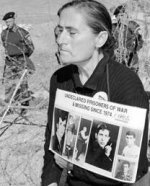
1600+ men, women and children
still missing
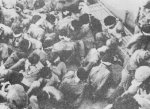
up to 70,000 held hostage in concentration camps
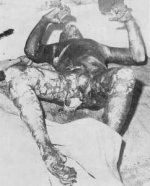
5000+ massacred
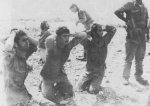
thousands raped and tortured
200,000 ethnically cleansed
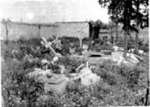
500+ churches desecrated or destroyed
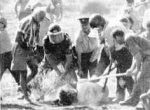
murders of refugees continue to this day

|